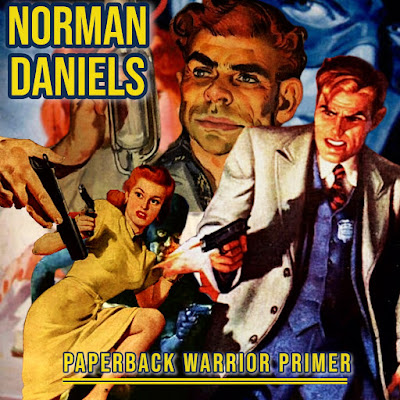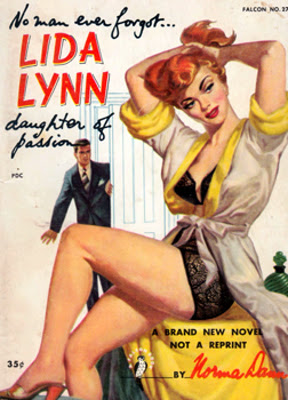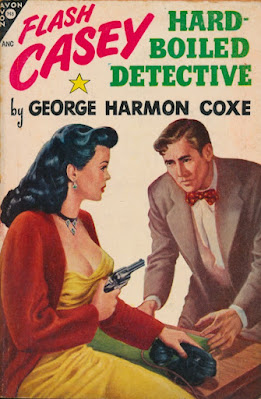The tenth of the Lancer Conan paperbacks, Conan of Cimmeria, was published in 1969. The publisher reprinted it in 1970 through 1973. Ace took over the publication in 1977, after Lancer's bankruptcy. The paperback was also published by Sphere Books in England in 1974. The book's contents is disappointing considering that Robert E. Howard's sole work, “The Frost Giant's Daughter”, “Queen of the Black Coast”, and “The Vale of Lost Women” only make up three of the eight selections. The rest are written by L. Sprague de Camp and Lin Carter either together, solely, or with the aid of Howard's prior unpublished work. However, Frank Frazetta's cover painting is one of the most iconic of Conan culture.The book begins with the obligatory map of the world of Conan in the Hyborian Age followed by an introduction authored by de Camp regarding Howard's short-lived life, the pseudo-history of Conan's world, and the fictional biography of the titular hero.
The highlight of the paperback is “The Frost-Giant's Daughter”. This was originally published with different characters as “The Gods of the North” (The Fantasy Fan #7, March 1934) after being rejected as a Conan story by Weird Tales. “The Frost-Giant's Daughter” version was first published in The Coming of Conan (Gnome Press, 1953).
In the story, the hero has returned to his homeland in Cimmeria, but grows a hunger for battle. He decides to participate in a raid into Vanaheim with his old barbaric friends the Aesirs. As the narrative begins, Conan is the last remaining combatant of the Aesirs and an enemy named Heimdul is the sole member left of Vanaheim's fighting forces. They both lock into battle and Conan kills Heimdul, but collapses from exhaustion on the hard frozen ground. Conan awakens to feminine laughter and then sees a beautiful ivory-skinned woman in front of him. She's naked and barefoot, yet dancing on the snow. Lusting for this cold-weather maiden, Conan trails the woman for miles through the frozen wastelands. Growing tired, he suddenly realizes that the woman has led him to her two brothers, savage frost giants.
“The Frost-Giant's Daughter” has a special kind of frosty ambiance and a dreamlike presentation that is unique for a Conan story. I'm surprised it wasn't picked up by one of the publishers of that era in its original form, yet I can foresee how they may have perceived Conan in this odd sort of icy trance. In the end, it all worked out for readers and fans as this story is one of Howard's finest stories.
The other iconic Howard story in this paperback edition is “Queen of the Black Coast”. It was originally published in Weird Tales (May 1934) and then reprinted in Avon Fantasy Reader (#8, Nov. 1948). It's ranked in the higher echelons of Howard's Conan offerings for a reason. The story begins with Conan fleeing the law in Argos. Conan, in an effort to avoid his pursuers, demands passage on the Argus, a trading barge. When the Argus crew refuses to allow Conan to board, he threatens to kill the captain and his crew. Conan then befriends the ship's captain, a guy named Tito.
The story's title comes to fruition when Belit arrives, a gorgeous female pirate commanding the Tigress. Her clashing with Conan's crew in Kush is a violent, epic struggle as the Argos crew is annihilated by Belit's black pirates. However, she finds Conan's fighting skills to be superb, peaking her interest in the adventurer. Belit is sexually attracted to Conan and soon the two become lovers as they ravage Stygian coastlines.
On the river Zarkheba, Conan and Belit discover an ancient tower in the jungle. After rotating the tower, they find a wealth of treasures, including a cursed necklace for Belit. Soon, subhuman creatures (hyena men?) and a winged demon appear to slaughter the Tigress's crew. The necklace creates madness for Belit and after Conan's lone departure to kill a monster, he returns to find her corpse hanging from the ship.
“Queen of the Black Coast” presents something unusual for Conan – a true love. While readers don't partake in the relationship itself, they are there for the beginning. Belit's attraction to Conan is nearly hypnotic, submitting to the hero despite the number of crewmen she commands and the overall superiority of her ship. Conan instantly feels the attraction and is magnetized by this “She-Devil” as are readers.
The other sole Howard offering here is “The Vale of Lost Women”, estimated to have been written in 1933. It was never published in Howard's lifetime, only seeing a release much later in Magazine of Horror (Spring 1967). There was never any indication that the story was submitted to the pulps.“The Vale of Lost Women” takes place after the events of “Queen of the Black Coast” and Belit's death. Conan has joined the Bamula tribe in the jungles of Kush, becoming their new tribal king. In an effort to propose a possible truce, Conan visits a rival tribe called The Bakalah. It is here that he meets a white female prisoner named Livia. He learns that both Livia, and her brother, are scientists from Ophir that were captured by Bakalah warriors. Livia's brother was tortured to death, and she's certainly next to die.
Livia suggests to Conan that she is a virgin, and after he refuses to free her, she offers him her body. Conan then agrees to help her escape. Later that day, she sees Conan walking towards her carrying the bloody severed head of the Bakalah's tribal chief. In fear that Conan, now drenched in crimson, is coming for her, she escapes on horseback into the jungle.
Livia falls from her horse and discovers she's in a beautiful valley that is home to a tribe of black lesbians! But, the lesbians are using poisonous orchids to create a hallucinogenic effect, placing Livia in a trance. She finds that these lesbians are sacrificing her on an alter to a giant black bat! Thankfully, Conan has trailed Livia and fights off the giant bat thing. Livia, fearing that Conan will attempt to claim her, becomes frightened. However, Conan simply advises her that he made a mistake in accepting her proposal to give herself to him. Arguably, he is suggesting there is no honor in that. Instead, he agrees to guide her to the Stygian border where she can eventually find passage to Ophir.
There isn't much to Howard's story, which probably contributes to the possibility that it was never submitted for publication during the author's lifetime. The imagery of Conan slowly walking through carnage holding a severed head is memorable, but aside from that there isn't a whole lot to highlight. But, the story does present a rarely seen moment of the hero's life as the Bamula leader.
The best of the de Camp and Carter stories featured in the paperback is “Lair of the Ice Worm”, an original story published for the first time here.
The story picks up after the events of "The Frost-Giant's Daughter" as a twenty-something Conan is trudging through the snowfall in Aesir. A short distance away, Conan sees a young woman being attacked by savage men resembling Neanderthals. Soon, Conan is slicing his way to the woman's rescue, but his horse is killed in the battle. In an eerie premonition, the girl warns Conan of something ominous called a Yakhmar, but Conan (and readers) isn't sure what that is.
Finding shelter in a cave, Conan makes love to the girl by the firelight. He awakens to discover the girl is no longer in the cave. With the icy conditions outside, Conan fears something may have happened to her. Outside, he follows a trail that leads to two skeletons, one of the girl and another of his horse. Both have been picked clean of all flesh and oddly enveloped in ice. Conan begins to think that this Yakhmar thing is actually a Remora, a giant vampire-like worm. Feeling responsible for the girl's death, Conan tracks the worm's trail to an icy cave. Will he escape this fiendish assault of Remora?
An eerie atmosphere and ambiance prevails throughout this short fantasy story. There's the obvious elements of horror, complete with a worm-like creature squirming under the icy tundra. The early battle with the savages was written well and contained the sweeping adventure that REH's Conan stories frequently possessed. As an aside, the brawny hero had no resistance in bedding down the beauty of the story, another obvious trope of Conan storytelling.
Other stories in the paperback:
“The Curse of the Monolith” - an original de Camp & Carter story
“The Bloodstained God” - originally an unpublished Kirby O' Donnell story, reworked by Carter & de Camp
“The Castle of Terror” - originally an unfinished Howard manuscript, completed by Carter
“The Snout in the Dark” - originally an untitled fragment not finished or published, completed by Carter & de Camp.













.png)



.jpg)















